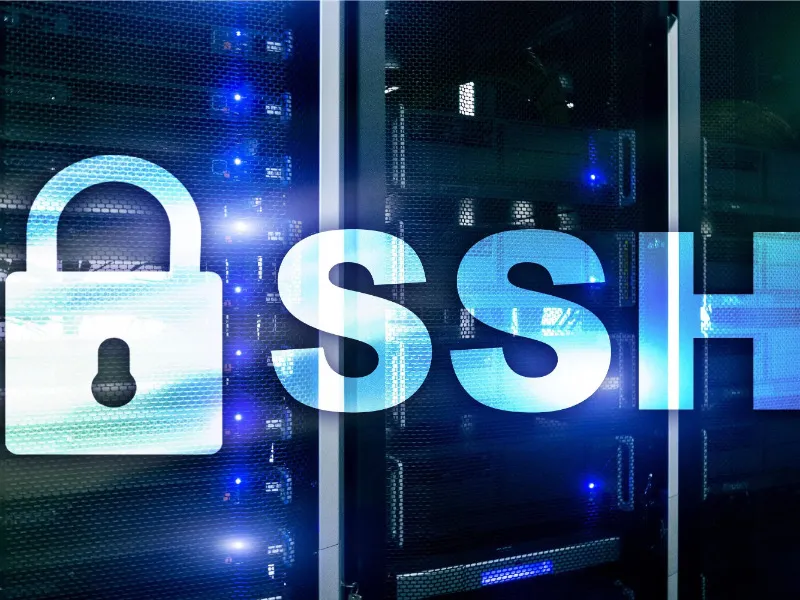Research on SSH: The Rule that Secures Remote Network Access; Secure Shell (SSH) is a cryptographic protocol that enables secure communication between devices over an unsecured network.
Its primary use is to provide secure access to remote machines, often in the context of systems administration, development, and network management.
SSH operates by encrypting data transmitted between client and server, protecting it from eavesdropping, man-in-the-middle attacks, and other cyber threats.
What You Need to Know About SSH Network Access
SSH was developed as a replacement for earlier, less secure protocols like Telnet and FTP (File Transfer Protocol), which transmitted data, including passwords, in plaintext.
SSH addresses these security concerns by using strong encryption techniques to ensure that any data exchanged between the client and server is unreadable to unauthorized parties.
There are three primary components of SSH:
- Transport Layer Protocol: This part handles the initial setup of the encrypted channel and ensures data integrity and confidentiality during communication.
- User Authentication Protocol: Once a secure connection is established, the client authenticates itself to the server using various methods such as passwords, public keys, or certificates.
- Connection Protocol: This layer multiplexes multiple logical communication channels over a single SSH connection. It allows data, commands, and tunneling to be transmitted simultaneously.
SSH is widely used on Unix-based systems (Linux and macOS), but it is also available on Windows, making it a versatile and essential tool in modern IT environments.
How SSH Operates in Controlling Remote Network Access
Research on SSH: The Rule that Secures Remote Network Access; SSH operates on the client-server model. A user (client) connects to a remote machine (server) using SSH client software. The client sends a request to initiate an encrypted session, and the server responds with its public key.
Once the public key is received, the client uses this to establish a session key, which is used to encrypt further communications between the two parties.
READ THIS ARTICLE ALSO: 7 AI-Powered Apps for Self-Diagnosing Health Conditions
The process typically involves:
- Key Exchange: The server sends its public key to the client. The client checks the server’s authenticity by comparing the public key with previously stored keys or certificates.
- Session Setup: The client and server negotiate encryption algorithms and agree on a session key for encrypting the communication. This process is done using the Diffie-Hellman key exchange or RSA.
- User Authentication: The client must authenticate itself using methods like a password, SSH keys, or multi-factor authentication. SSH keys are the most secure and commonly used method, leveraging asymmetric encryption where a public-private key pair is generated.
- Data Transmission: Once authenticated, the client and server can exchange data securely. All communications are encrypted, ensuring that any intercepted data cannot be decoded.
Real-Life Applications of SSH Network
SSH is used in various fields where secure remote access and data protection are crucial. Some real-world applications include:
- System Administration: IT administrators use SSH to remotely manage servers, make software updates, configure systems, and troubleshoot issues without needing physical access to the machine.
- Secure File Transfer: SSH File Transfer Protocol (SFTP) and Secure Copy Protocol (SCP) allow users to transfer files securely between devices over an encrypted channel.
- Tunneling and Port Forwarding: SSH tunneling allows users to securely route network traffic from one network to another by creating a secure “tunnel” over an unsecured network. This technique is used for bypassing firewalls and securing traffic for applications like database access or web browsing.
- Version Control Systems: Developers use SSH to securely communicate with Git repositories hosted on platforms like GitHub, Bitbucket, or GitLab.
- IoT Devices: SSH is often used to remotely manage and configure Internet of Things (IoT) devices, ensuring secure control of devices that may be located in different geographical regions.
5 Key Features of SSH Network
- Strong Encryption: SSH uses public-key cryptography and encryption algorithms such as AES (Advanced Encryption Standard) and 3DES (Triple Data Encryption Standard), ensuring that all communication is highly secure and resistant to attacks.
- Authentication Mechanisms: SSH supports multiple authentication methods, including password-based, public-key authentication, and multi-factor authentication. Public-key authentication is particularly favored for its strong security.
- Port Forwarding (Tunneling): SSH can tunnel traffic from different protocols over a secure channel, allowing users to encrypt otherwise unsecured protocols. This feature is useful for securely accessing remote services, such as databases or web applications.
READ THIS ALSO: APNIC Introduces New Registry API to Streamline Network Operations
- Data Integrity: SSH includes integrity checking, ensuring that the data sent between client and server has not been tampered with. This is achieved using message authentication codes (MACs) to verify the authenticity and integrity of data.
- Compression: SSH has built-in compression capabilities, which reduce the amount of data transmitted over the network, improving the speed of file transfers and remote sessions, especially over slower connections.
